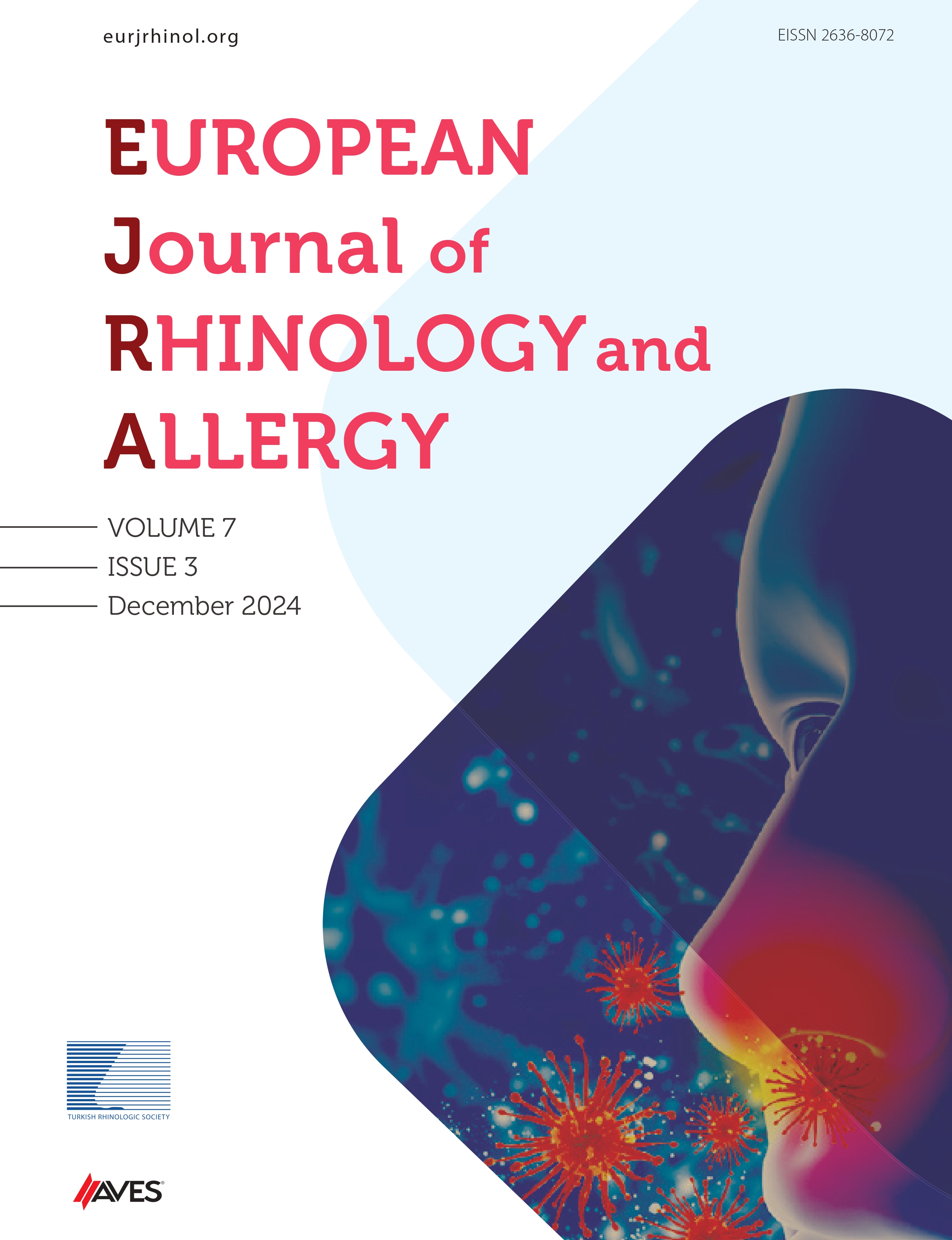Objective: Benign vascular lesions are common in the head and neck area, but sinonasal involvement is rare. This study aimed to present the features and surgical outcomes of patients with benign sinonasal vascular lesions in a single institution.
Material and Methods: Medical records of 20 patients who underwent surgery for benign sinonasal vascular lesions at the Department of Otolaryngology, Hacettepe University between 2005 and 2020, were retrospectively reviewed. Patients’ demographic characteristics, lesion size and localization, surgical outcomes, and recurrence status were noted.
Results: The study group comprised 8 male (40%) and 12 female (60%) patients. Mean age was 41.3±22 years. The main presenting symptoms were epistaxis (60%) and nasal obstruction (30%). The most common sites of origin were the inferior turbinate (35%) and nasal septum (30%), followed by the maxillary sinus (15%). Mean lesion size was 27.1±13.2 mm. Histopathologically, 12 specimens were classified as vascular malformations and 8 as vascular tumors. Mean age was higher among the vascular malformations compared to the vascular tumors (49.9 y vs 28.5 y, p=0.031). All the lesions at the inferior turbinate were vascular malformations (p=0.014). The endoscopic endonasal technique was used in 16 patients (80%) whereas, combined techniques were used in 4 patients (20%). Residue/recurrence rate was 25%. The mean lesion size was larger in patients with residue/recurrence (42 mm vs 22 mm, p=0.001).
Conclusion: The endonasal endoscopic technique could be successfully used for the treatment of benign sinonasal vascular lesions. Lesion size was important with regard to residue/recurrence; thus, patients with larger lesions should be followed-up closely in the postoperative period.
Cite this article as: Pamuk AE, Kılıç B, Özer S, Süslü AE. Surgical Treatment of Benign Sinonasal Vascular Lesions: Hacettepe ENT Experience. Eur J Rhinol Allergy 2020; 3(2): 29-33.

.png)

.png)